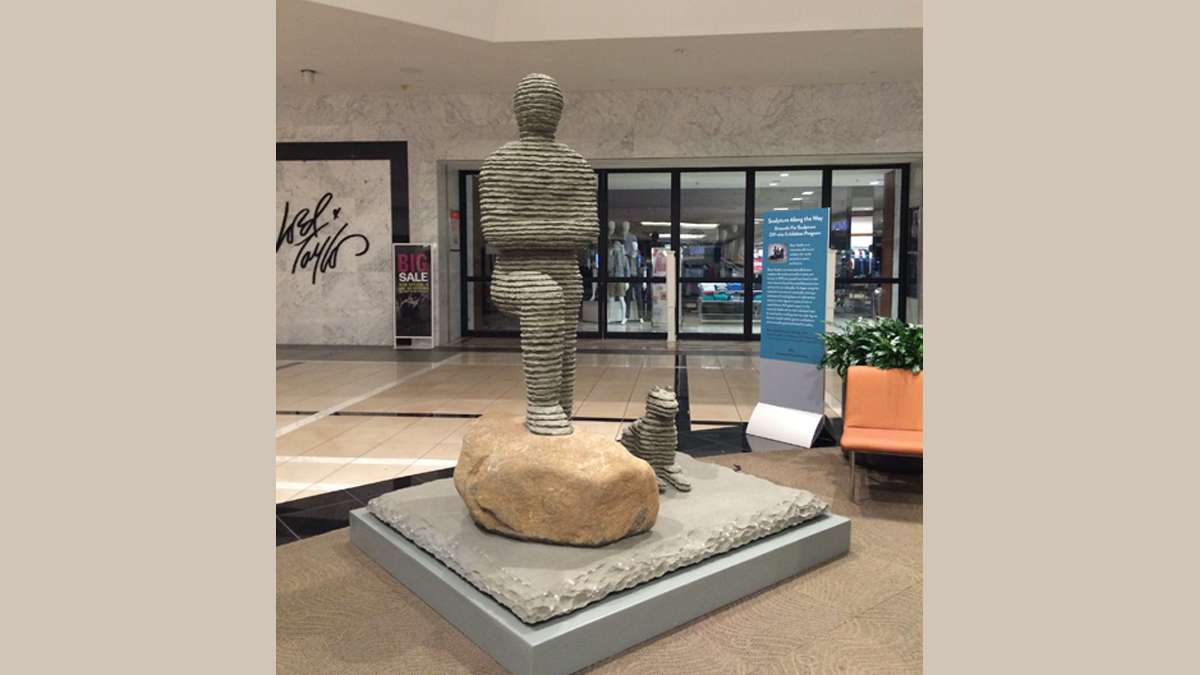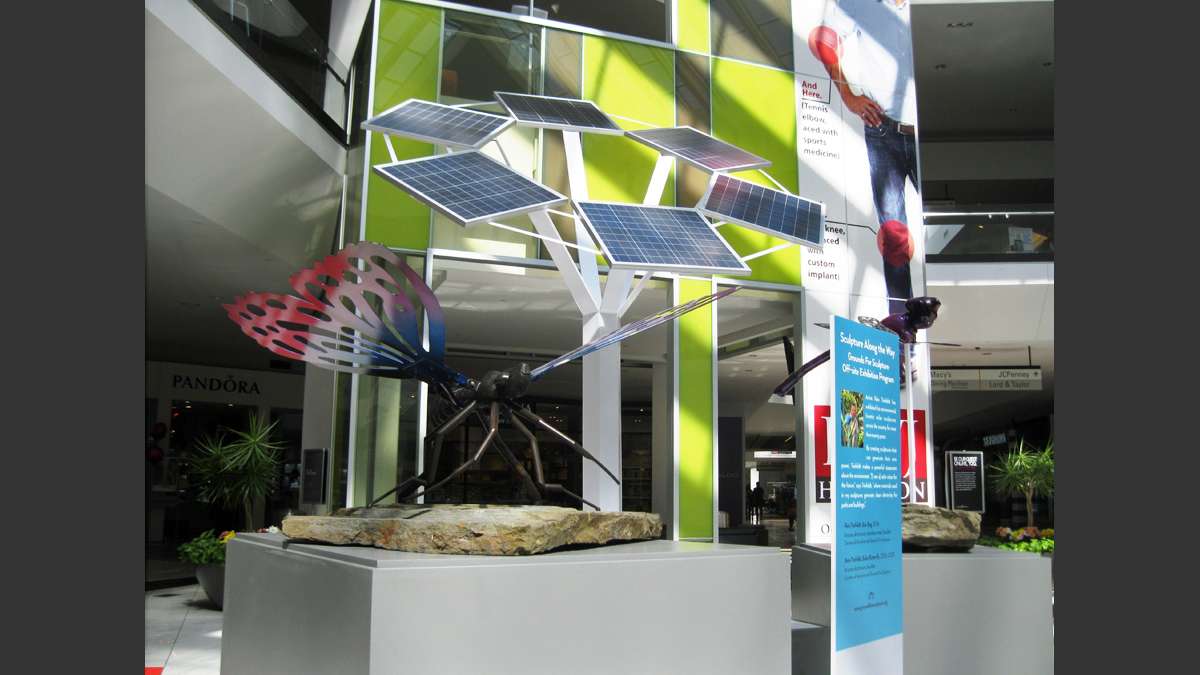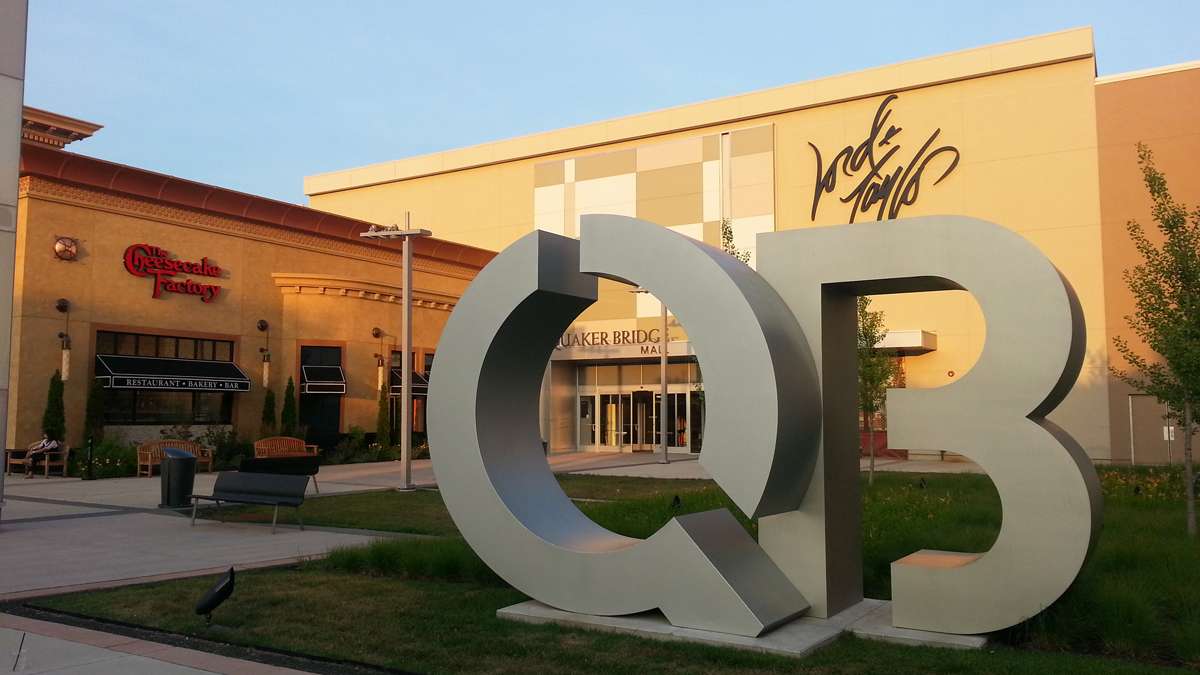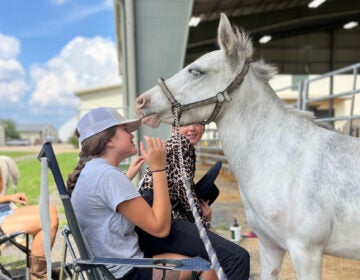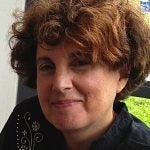What would happen if we put art in a mall?
It worked!
The newly installed sculpture at Quaker Bridge Mall in Lawrence Township drew me back inside the shopping center for the first time in eons. Now that I no longer have to leave my desktop to fill an eyeglass prescription, and ever since the cinema was converted to retail space in the late 1990s, there hasn’t been much reason to go to the mall, except perhaps to bring a device to the Apple store for service—for which I dodge sales people trying to spritz me with samples of potions from the Dead Sea.
The mall in central New Jersey has done a great deal in recent years to lure people back with more places to eat or buy food products. The new sculpture is yet another way to bring back consumers.
The new venture is called “Grounds For Shopping,” a collaboration with Grounds For Sculpture, the 35-acre not-for-profit sculpture garden and arboretum in nearby Hamilton, which has long had a “breadcrumb trail” of sculptures from Sloan Avenue and the Hamilton Train Station to its home site on Sculptors Way. The three-year partnership with the Quaker Bridge Mall is yet another way it invites audiences to experience art from renowned and emerging artists in a familiar, accessible and informal setting, bringing an educational arts experience to locations outside of its physical grounds.
“Our organization was established in 1992 to promote an understanding and appreciation of contemporary sculpture, and this partnership enables us to inspire and enliven the community through public art,” said GFS Executive Director Gary Garrido Schneider.
Boaz Vaadia’s “Daniyyel with Dog” (bronze, boulder and bluestone) is a striking work of art. After moving from Israel to New York City in 1975, Vaadia started working with bluestone salvaged from former sidewalks, stacking the thin slices and shaping it, in this case, to form a male figure and a dog. There are leather sofas and chairs—a kind of living room in the center of the mall—from which to take in the artwork, lit by the two-story atrium.
I was reminded of a magnificent fountain formerly at the center of a nearby shopping center. But shortly after MarketFair opened in the late 1980s, the fountain was replaced by mobile vending carts. It was prime real estate, space that had to be monetized. Apparently that’s the case in the atrium at Quaker Bridge Mall, where 25 feet from Vaadia’s stone sculpture is a large white SUV for sale, as well as two Steinways so shiny one can see the reflection of the auto dealer’s large banner. But fear not, this is just a teaser to a much larger exhibit of works by Boaz Vaadia on view at Grounds For Sculpture through September 18.
In the other atrium are three works by Trenton-based artist Rein Triefeldt: “Sun Bug” (a purple dragonfly made of bronze, aluminum and stainless steel), “Solar Butterfly,” also purple, and a large six-pronged sunflower made of solar collectors to generate the power for the sculpture. The paint on the dragonfly has micro prisms that make it change color, depending on the position of the light.
Triefeldt’s environmental kinetic sculptures have been exhibited internationally. His energy-producing sculptures are used to provide power for homes, museums, sculpture parks, arboretums, vineyards and public places.
Born in Toronto and of Estonian ancestry—he says this is significant because Estonians are know as being sun worshippers—he works out of what was once a farmhouse, then a horseshoe and later a tinsmith shop in New Jersey’s capital city. Several years ago, as an artist-in-residence at the Arts Council of Princeton, Triefeldt worked with students at the John Witherspoon Middle School in Princeton to learn about energy, renewable resources, design and sculpting, and environmental issues through his Solar Tree Project.
In the mall, Triefeldt’s artwork seems overwhelmed by commerce. A large billboard for the spine and orthopedic division of a large hospital reminds me there’s a reason I prefer to see artwork in museums, where distractions are kept to a minimum.
At that moment a little girl walked by with her mother pushing a stroller. “I love butterflies,” she said, looking up at the purple sculpture. Her mother posed the girl for a snap shot and maybe posted it to social media. This little girl’s life was touched by art, something that might not have happened if there wasn’t art in the mall. And presumably thousands of others who encounter these works daily will be affected. The snap shot becomes part of the family’s digital archives, their collective memories, imprinting the art experience on this youngster who may someday want to visit museums as a result.
The aroma of baking sugar made me crave something sweet and when I looked around for a place to get a latte, all I saw was a crepe stand and a bubble tea vendor, so I rode the escalator to get a bird’s eye view of the butterfly and the dragonfly.
Although I prefer my sculpture without shopping center music and the smell of donuts, I succumbed to what people do in malls—made a few purchases. Not sure when I’ll be back, but am glad to know that shoppers’ experiences will be enriched by the presence of art, and hopefully these viewers will feel inspired to visit Grounds For Sculpture and other museums.
Oh, look, it’s the optical shop I used to go to! And there’s an additional living room seating area on the upper level, with a charging station. Can’t shop til you drop without fully charged devices. You never know when you’ll need to shoot a selfie with sculpture.
____________________________________________
The Artful Blogger is written by Ilene Dube and offers a look inside the art world of the greater Princeton area. Ilene Dube is an award-winning arts writer and editor, as well as an artist, curator and activist for the arts.
WHYY is your source for fact-based, in-depth journalism and information. As a nonprofit organization, we rely on financial support from readers like you. Please give today.



